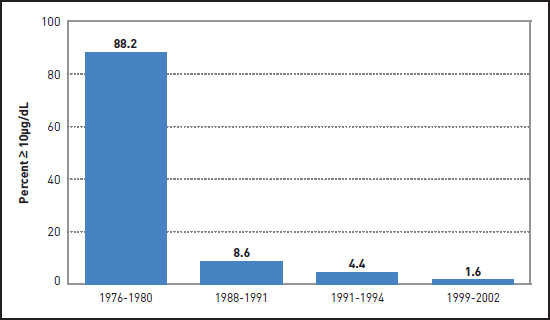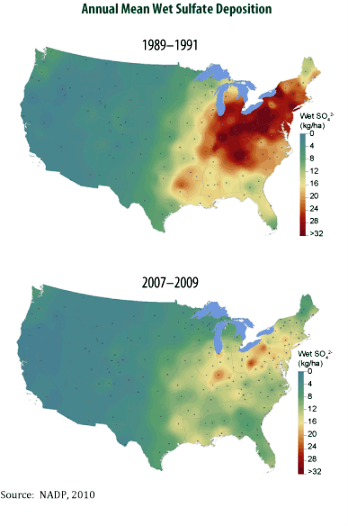A few days ago, the Wall Street Journal reported that Peabody Coal Company is one of the top five worst performing stocks of 2013.
In a year when the S&P 500 was up 29 percent and the Dow rose by 26 percent, Peabody Coal’s stock plummeted by 28 percent.
While most investors recognize the serious environmental and financial risks associated with coal and its pollution, not all do.
Drexel University Professor Robert Brulle reviewed IRS data from 2003 to 2010 and found a web of entities investing over $900 million annually in organizations dedicated to obstructing climate progress and fighting the deployment of safe, clean energy in America.
If you take a closer look at those specific organizations identified in Brulle’s study, you’ll find that several of them are involved – now – in extensive efforts to obstruct climate and clean energy progress under the nation’s clean air laws and leading state programs.
Take a look at these examples:
The Landmark Legal Foundation, Competitive Enterprise Institute and FreedomWorks all just filed briefs before the U.S. Supreme Court challenging the Clean Air Act’s requirement that, at the time of their design and construction, large industrial sources deploy cost-effective modern pollution control technologies to mitigate their climate pollution.
In its challenge to clean air measures for climate pollution, the Competitive Enterprise Institute and FreedomWorks brief (filed along with Southeastern Legal Foundation) relies extensively — and chillingly — on the tobacco industry case FDA v. Brown & Williamson Tobacco Corp. and the legal attacks on our nation’s efforts to eliminate the scourge of youth tobacco addiction:
The Court’s approach to FDA’s assertion of regulatory authority over tobacco products has direct relevance in the present case and should control the outcome here.
(That’s from page 7 of their brief. The Supreme Court has already considered – and rejected – this misguided legal attack in the context of EPA’s authority to regulate climate pollution.)
Earlier this year, the Landmark Legal Foundation unsuccessfully asked the U.S. Supreme Court to review EPA’s science-based determination that six greenhouse gases endanger the health and welfare of current and future generations. They tried to challenge EPA’s determination, anchored in extensive science reflecting decades of research, by ridiculously questioning whether this finding is a “scientific judgment.” (see page 11 of their brief)
The Competitive Enterprise Institute also litigated to overturn New York Republican Governor George Pataki’s leading efforts to cap and reduce the climate pollution from fossil fuel power plants in New York and to participate in a broader regional pollution control program, the Regional Greenhouse Gas Initiative.
On December 5th, New York’s appellate court affirmed the decision of the state’s trial court firmly rejecting these legal attacks.
In his study, Brulle also chronicles the “evidence of a trend toward concealing the sources of [climate obstructionism] funding through the use of donor directed philanthropies” such as the Donors Trust.
A closer look at funding by the Donors Trust through its most recent IRS Form 990 (2011) indicates $1,189,730 in grant funding provided to an organization called the Committee for a Constructive Tomorrow (CFACT). CFACT is a major outlet for climate denialism.
CFACT, too, just filed a brief with the U.S. Supreme Court in which it asserts that the overwhelming scientific consensus on human-induced climate change is “tenuous, biased, inaccurate, incomplete, unsupported by actual observations, and lacking in scientific integrity.”
The recent scientific findings of the world’s leading scientists set out in the Fifth Assessment Report of the Intergovernmental Panel on Climate Change found that climate change is unequivocal and its impacts are unprecedented and profound.
Another organization that has received support from the Donors Trust according to the Trust’s IRS Form 990 (2011) is the Judicial Education Project.
They also just filed a brief with the U.S. Supreme Court challenging the federal government’s authority to regulate greenhouse gas emissions from the nation’s largest sources of such pollution. The brief alleges that the Environmental Protection Agency exceeded its authority under the U.S. Supreme Court’s 2007 landmark case, Massachusetts v. EPA, in which the Court stated that the “harms associated with climate change are serious and well recognized.”
Earlier this year, the Mercatus Center — another group identified by Brulle’s research — submitted adverse comments on proposed clean air standards for cars and gasoline by calling into question the extensive body of peer reviewed science linking particulate pollution and mortality.
It is well documented that these clean air standards for cars and gasoline will provide healthier, longer lives. They have also won the support of diverse interests, including the American Lung Association and the U.S. auto industry, because of the dual benefits of reducing health-harming pollutants and enabling more efficient clean car technologies.
Recently, the Landmark Legal Foundation joined by the Cato Institute — both groups identified in Brulle’s research — challenged the Department of Energy’s adoption of improved appliance efficiency standards for microwaves.
The microwave standards will lead to less energy use, consumer cost savings and pollution reductions. Landmark Legal Foundation and the Cato Institute objected to DOE’s consideration of the societal benefits of mitigating carbon pollution. Patrick Michaels, a well-known climate denialist, co-authored the Cato comments. Landmark asked DOE to immediately halt implementation and rescind the Rule.
DOE has denied the request to upend these common sense energy conservation standards for our nation.
And it is not surprising that Peabody Coal Company, too, has just filed a brief in the U.S. Supreme Court objecting to the Clean Air Act requirement that our nation’s largest industrial emitters use modern pollution controls to mitigate climate pollution.
Peabody’s brief begins by asserting that “[w]hether and how to regulate GHGs [greenhouse gases] remains a highly debated, contentious issue in Congress, agencies and the courts.” (Page 2 of their brief)
But Brulle’s research elucidates how Peabody’s assertion is a tautology. Through massive funding of groups dedicated to climate obstructionism, Brulle documents how climate change remains contentious because there is a vast climate change counter-movement dedicated to making it so:
[A] number of conservative think tanks, trade associations, and advocacy organizations are the key organizational components of a well-organized climate change counter-movement (CCCM) that has not only played a major role in confounding public understanding of climate science, but also successfully delayed meaningful government policy actions to address the issue.
Climate change is happening. The toll exacted from extreme weather — fueled in part by climate change — on human life and our economy is profound, and reaches from the ravages wrought on New York and New Jersey by Hurricane Sandy to the tragic flooding in the Rockies.
However, the solutions are at hand.
In 2012, wind power was “the number one source of new U.S. electric generation capacity for the first time—representing 43 percent of all new electric additions and accounting for $25 billion in U.S. investment.”
And even more recently, in November 2013, 100 percent – ALL – of the new electrical power in America came from renewable energy.
While Peabody’s stock falls and its rhetoric rises, and while the forces of obstructionism fight clean energy, the winds of change are blowing briskly.
Brulle’s study is a clarion call for moms, dads, grandparents, aunts, and uncles to resolve that in 2014 we will work together to fight for clean air and clean energy for our children — and for all children.
In spite of a well-funded group of obstructionists, we can prevail.
We can secure climate progress and clean energy for our nation, for our communities and for our future.











